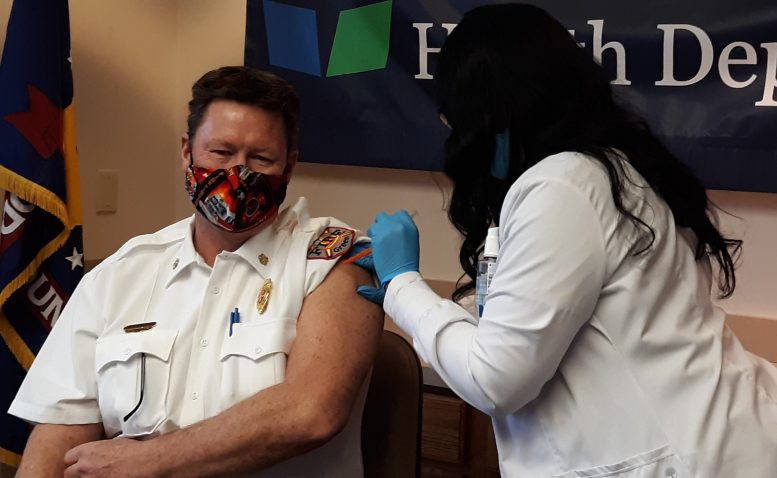Gov. Mike DeWine has announced the opening up of COVID vaccines for more categories of people – including law enforcement, firefighters, and those who provide child care and funeral services. The next phase will include those 60 years and older.
Ohio is expected to get 96,100 doses of the Johnson & Johnson vaccine. Combined with Pfizer and Moderna, Ohio will be getting a total of 448,390 vaccinations this week which will be the highest Ohio has seen to date.
Johnson & Johnson vaccines will be sent to more than 200 additional independent pharmacies as well as hospitals, health departments and pharmacy chains. Just in this region there are more than 2,000 vaccination appointments available, according to Wood County Emergency Management Agency.
Phase 1C will begin Thursday, March 4, and includes the following groups:
- MEDICAL: Type 1 Diabetes (early onset insulin dependent), pregnancy, bone marrow transplant (not including stem cell treatments) and ALS (Lou Gehrig’s Disease)
- EMPLOYMENT: Law enforcement/corrections (including OSHP, ODNR, BCI, and federal agencies but not reserve or special officers), active firefighters (including volunteer), funeral services and children services for those in direct in room activities.
Phase 2 has also been added for those 60 years and older. This group is approximately 900,000 people.
Governor DeWine thanked the volunteers assisting to help in vaccination locations.
Ohio’s goal was to get Ohio’s students back in the classroom by March 1. In January only 50% of the students had some form of face-to-face education. Today out of 609 public schools in Ohio only eight are not back in some type of face-to-face education and seven of those will be back in the next few weeks.
Also today, Lt. Gov. Jon Husted wanted to make Ohioans aware of the $1.9 trillion Relief Bill. The bill, as passed, distributes $350 billion to governments using a formula that incorporates state 4th quarter 2020 unemployment rates instead of the population-based like the CARES ACT.
The states with higher unemployment rates during that period would get disproportionately higher COVID funding than states with lower unemployment rates. Under the current proposal, Ohio would lose $800 million with the new formula. Ohio is not alone as there are other states that are expected to lose funding. DeWine signed a letter along with other states stating the unfairness of the proposal and has notified Senator Sherrod Brown and Senator Rob Portman of such.

